Opening the 2010 DocAviv Galil film festival on November 29, 2010, Festival Director Galia Bador said, “We don’t need a change in the film law favoring the periphery in order to have a film festival in the Galilee – all one needs is a good product, daring, and most important, good partners for the journey.”
DocAviv Galil has found such a partner in the city of Ma’alot-Tarshiha. The festival, which closed on December 2, 2010, now marks its second year in the Western Galilee city. 20 kilometers from the coastal city of Nahariya, and 600 meters above sea level, the city enjoys the breadth of sky, invigorating air and breathing room – room to grow, room to dream. Established in 1963 when the Jewish village of Ma’a lot and the Arab village of Tarshiha chose to merge their municipalities and become one town (achieving city status in 1996), Ma’a lot Tarshiha appears to be characterized by openness and willingness to experience and experiment.
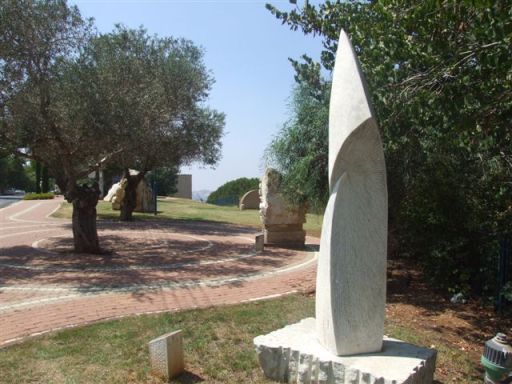
An afternoon press tour of the city led by Maymon Pe’er included a stop in the office of National Union of Local Authorities Chairman and Mayor of Ma’a lot, Shlomo Buhbut, who recalled meeting with Haifa resident Moshe Perlman twenty years ago. Perlman brought him an idea that the city of Haifa had dismissed: inviting sculptors from around the world to create sculptures in the city. First held in 1992, “Stone in the Galilee Symposium” the annual event that takes place during the Passover holiday in the spring, its presence is enjoyed year round throughout Ma’a lot-Tarshiha in the large-scale outdoor sculptures that have become part of the cityscape. The city has also hosted international chess, fencing and ballroom dancing tournaments. Yet, despite the beautiful views and clean, wide streets, Mayor Buhbut says, “It’s not easy to be in the periphery. The periphery’s biggest enemy is Tel Aviv – it’s a magnet that attracts our young people.”
According to the Mayor, there is no shortage of industries who would gladly locate in Ma’a lot-Tarshiha, creating new jobs. However, the critical issue in terms of keeping young people in the area is the question of what kind of jobs will be offered, and at what pay scale. The key to the city’s growth lies in its ability to offer the professional opportunities and quality of life similar to that which is available in larger cities.
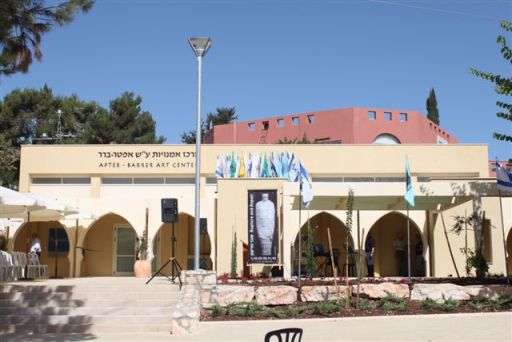
Built on the foundations of the first neighborhood in Ma’a lot (the Ma’abara -transit camps built to accommodate the large waves of immigrants in the 1950s), the Barrer Apter Art Center & Gallery is one way in which the city addresses these issues. Elaine Levitt, Chairperson of the Amuta (the Management Committee is an NPO with an all-volunteer board), told the group of visiting journalists, “The Center aims to give children in Maalot-Tarshiha access to the same kinds of art experiences as children in Tel Aviv.”
The recently renovated Center, supported by the Ma’a lot-Tarshiha Municipality, the BuxMont community of Philadelphia, the Jewish Agency, and the Ministry of Science, Culture and Sport, offers year-round workshops for children and adults, the spacious gallery where Director and Curator Noga Migdal hosts changing exhibits. Two new exhibits opened this past week in the context of DocAviv Galil, both in the spirit of documentation, and with a focus on family (the exhibits will remain open until February 20, 2011). “Matzav Mishpahti” (Hebrew: family status) by Reli and Avner Avrahami, features 20 photographs selected from the couple’s eight years of travelling through Israel, photographing and interviewing families for the Haaretz newspaper. The format is the same for all – posed facing the camera, answering questions about their daily routine – but the families are all different.
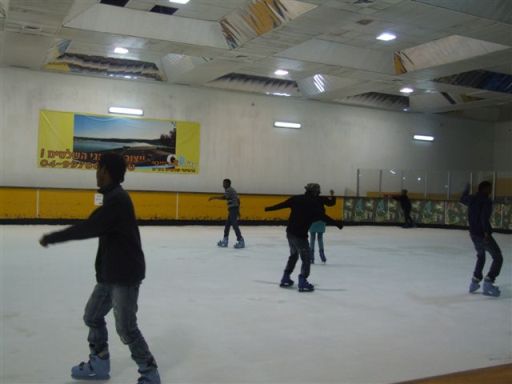
“Metzalmim BaBayit” (Hebrew: taking pictures at home) is a local project of Ma’a lot-Tarshiha, led by Ronit Frissman and photographer Avi Hirshfield. “We wanted to reach out into the community to get people involved who otherwise might not come to the art center,” Ronit explained, “and suggested to residents of Rova Gimel, one of the older neighborhoods, that they take part in an exhibit. Working with 12 families, we gave each family a camera and asked them to take pictures of their daily lives. We visited them once a week to download pictures and discuss the process. The cameras stayed with each family for about two months, and the project took place over the course of a year.”
Yosef Kingbol, whose family participated in the project (featured on the catalogue cover in a photo taken by Avi Hirshfield) immigrated to Israel from India four years ago. Yosef told the group that the family moved to Ma’a lot-Tarshiha three years ago after spending their first year in an absorption center in Nazareth. “I think the project was good for my children,” said Yosef, “they always like to take pictures with their cellphones.” Yosef said that in his four years in Israel he had never visited an art exhibit, adding almost as an afterthought, “but I did in India” – those few words conveying a sense of the enormous impact immigration has on people’s lives, affecting them in aspects that often go unnoticed and unremarked, those connections to the local culture that can be hard to create, or even think of creating, in the often overwhelming daily struggle to build a life in a new environment.
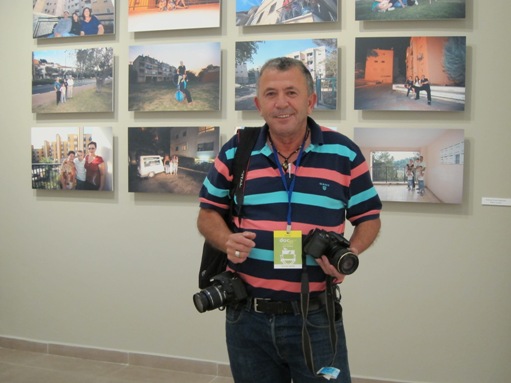
As I wandered through the gallery looking at the different configurations of families and photos – children and parents, grandparents, and even a group of young women in Sherut Leumi (National Service – working as volunteers in the community), I chatted with Shlomo Sharvit. Translating his years of police work into a different kind of service for the community, Shlomo accompanied our group of journalists with his camera, documenting the tour as he does other events in Ma’a lot-Tarshiha for the website, which offers a comprehensive view of city happenings in photographs, text and video. Shlomo’s interest in documentation goes beyond current events, he has started an oral history project, seeking out the older residents of Ma’a lot-Tarshiha and interviewing them about their experiences.
The presence of DocAviv Galil feels very natural here; the Barrer Apter Center has been home to “Talking Documentary in Ma’a lot-Tarshiha” for the past several years. The project was initiated by the Israeli Documentary Filmmakers Forum in 2005, to enable area residents interested in creating documentary films to learn about the genre through a year long course of study including hands-on workshops, screenings, lectures and discussions. Ronit Frissman, a member of the project’s first crop of graduates, said that through working in groups on short films, participants were able to gain experience in different aspects of making a documentary. A harvest of these films was screened as part of the 2010 DocAviv Galil festival.
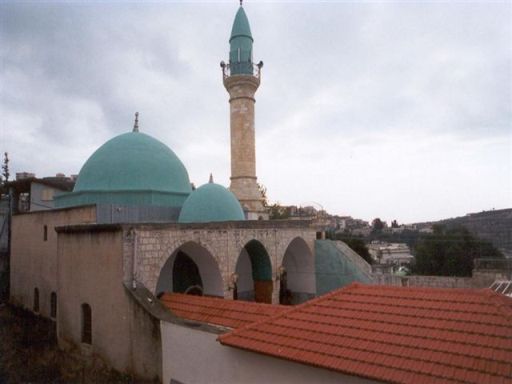
As might be expected, the aspect of Ma’a lot-Tarshiha that the visiting journalists found most fascinating is the connection between the Arab and Jewish residents. Is it merely administrative or is there a sense of an integrated community? Asked whether the schools were separate or integrated, Mayor Buhbut said, “Schools are separate, because they are organized according to neighborhoods, and the neighborhoods are, by choice, mostly separate. If people live together then it is natural for them to go to school together. There is one preschool with both Arab and Jewish children, which reflects the composition of the neighborhood.”
When the question came up again at the Art Center, they seemed surprised that anyone should ask. What seems exotic to the tourists from Tel Aviv is normal for Ma’a lot-Tarshiha. “It’s not really something we think about in our daily lives,” said Elaine. Director Noga Migdal smiled and said, “You should have been here at 15:30 when the children’s art classes ended. You would have seen a mother from Mi’ilya (a nearby Arab local council) picking up her daughter.” Jewish and Arab children from Ma’alot-Tarshiha and the surrounding area naturally meet in art classes and workshops at the Center, in addition, for many years the Center had a project (supported by the Abraham Fund) called “Through Art We Communicate” that was directed towards bringing together Arab and Jewish youth to create a dialogue of co-existence. The matter-of-fact approach doesn’t necessarily imply that all is hearts and flowers. Elaine added, upon reflection, “I don’t think that people love one another, but there is respect.” Perhaps that is as good a model for co-existence as any: respect.
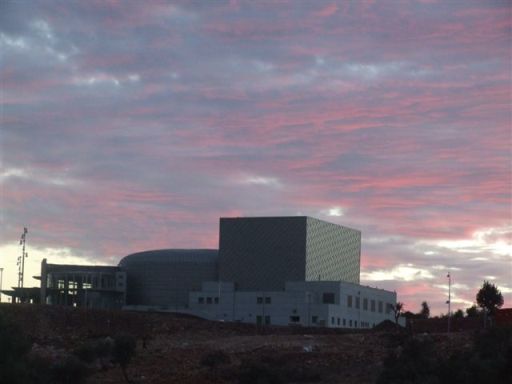
The group made its way towards the new Performing Arts Center for the DocAviv Galil opening ceremonies. Situated beyond the city center, the building reflects the ways in which the city plans accommodate the needs of its diverse population. The distance from residential neighborhoods will allow the center to be active year-round, offering cultural activities to those who wish to take part, without disturbing the religious observance of other city residents. The theme of harmony and balance through respect extends to the natural environment as well. As dusk fell on the city, Noam, the city engineer, explained that the street lights are programmed to turn on half an hour after dark, to save on energy, and city lights do not extend beyond the perimeter to create a separation between the urban and natural environment, enabling and encouraging wildlife to live comfortably in their own habitat. The city’s green look is made possible by training the plants used in landscaping to develop deep roots, so that they require less watering for their maintenance.
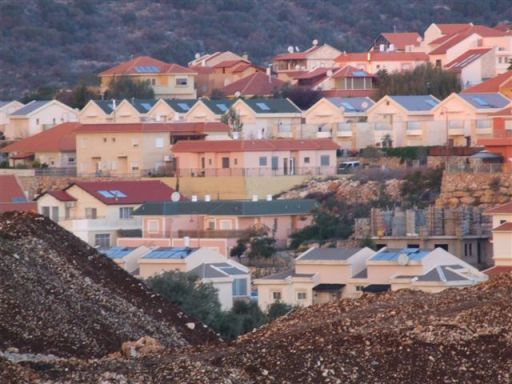
The name Nochi Dankner is one that was heard often throughout the day. 850 homes were damaged by the Second Lebanon War (three residents were killed in a rocket attack), Dankner has supported the city throughout the process of rebuilding, and today there is no trace of the damage. Mayor Buhbut said that when they were planning the Performing Arts Center, Dankner’s wife Orly stressed that is important that the stage be designed to accommodate dance and theatre performances. Ohad Naharin, Artistic Director and choreographer of the Batsheva Dance Company was invited to offer his advice. Naharin said that the stage they had planned was not large enough – and the plans were changed. The current stage is appropriate for any performance.

At the DocAviv Galil opening, Mayor Shlomo Buhbut walked on to the stage saying, “This is the first time that I am speaking from this stage, please turn on the lights, I want to see the audience.” Mayor Buhbut announced that the official opening ceremony for the Performing Arts Center will be held on January 12, 2011, a ceremony which the Mayor views as the prelude to the establishment of a college for the arts in Ma’a lot-Tarshiha.
“Metzalmim BaBayit” and “Matzav Mishpahti” will be on exhibit until February 20, 2011. The Barrer Apter Arts Center & Gallery, 15 Ben Gurion Street, Ma’alot-Tarshiha. For further information: 04-9977150, www.maltar.org.il/arts/
AYELET DEKEL

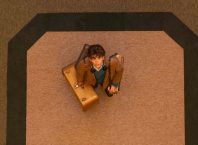
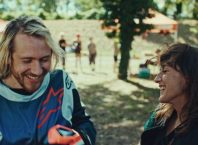
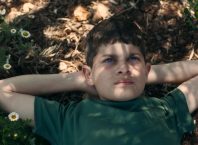


Comments are closed.